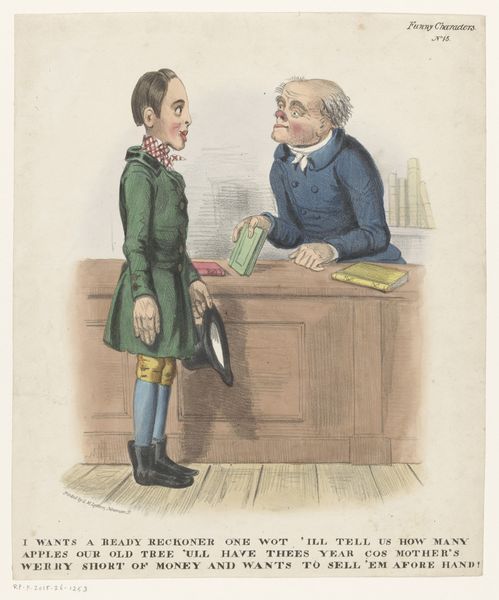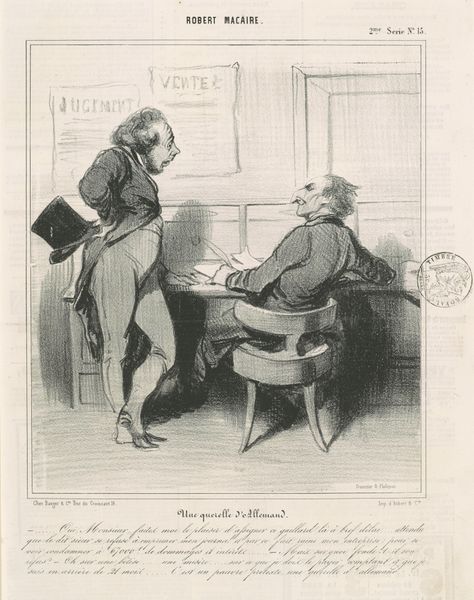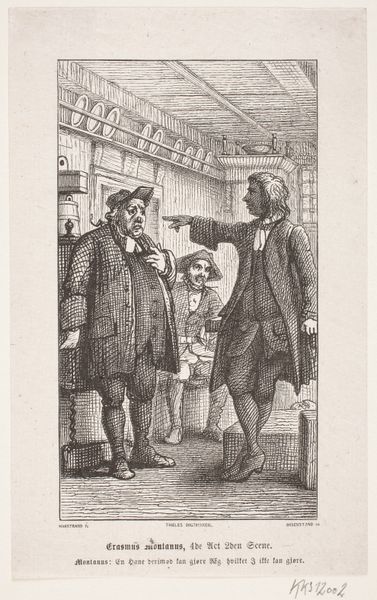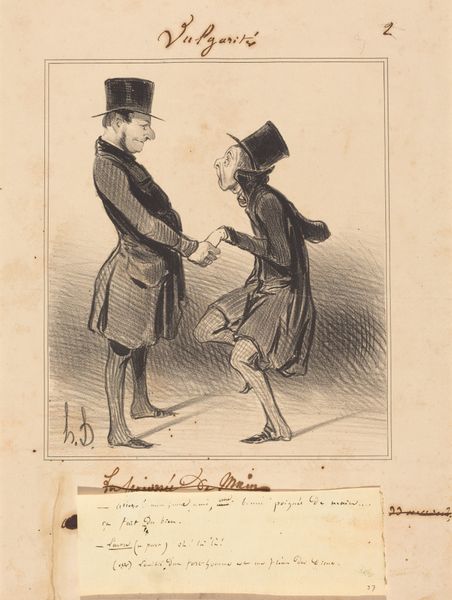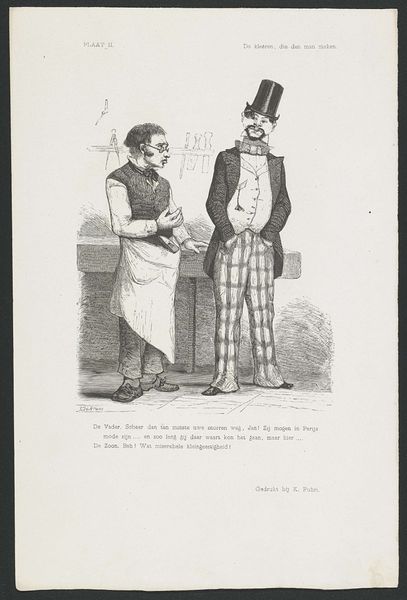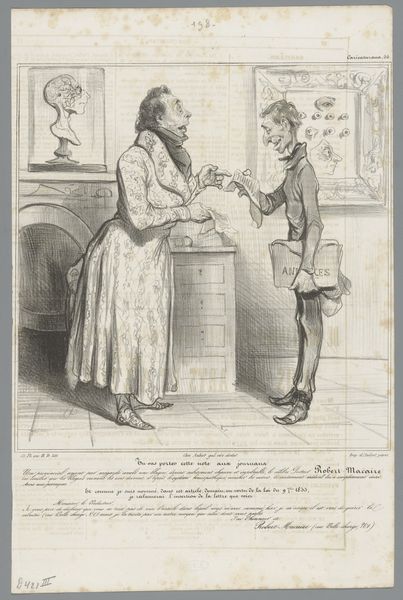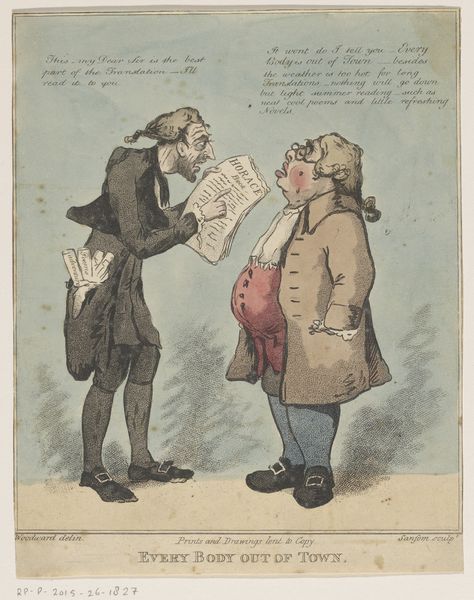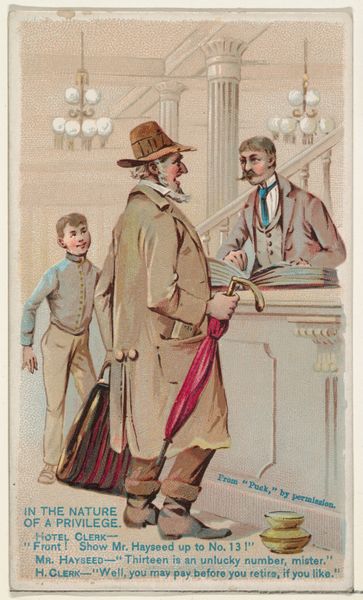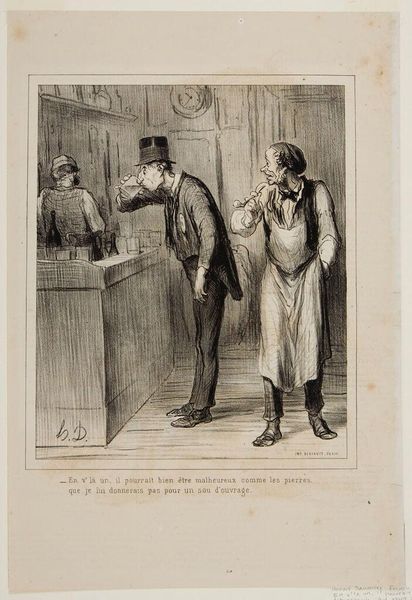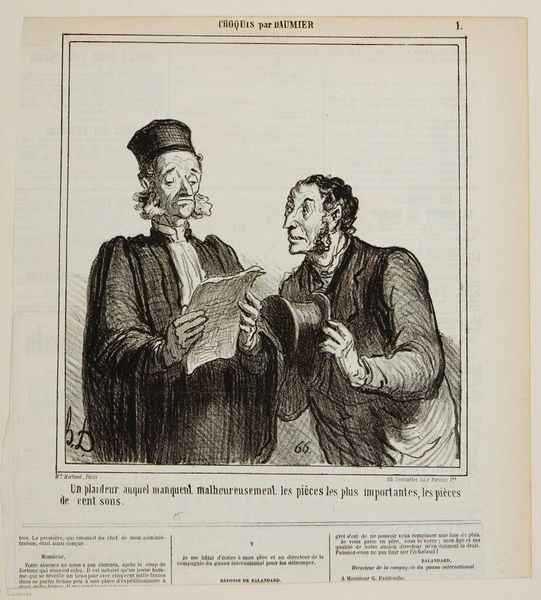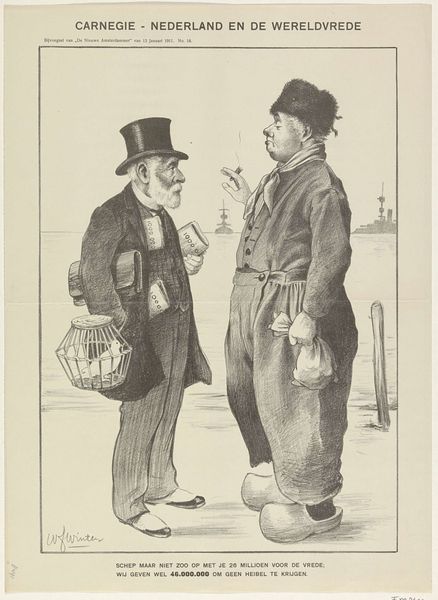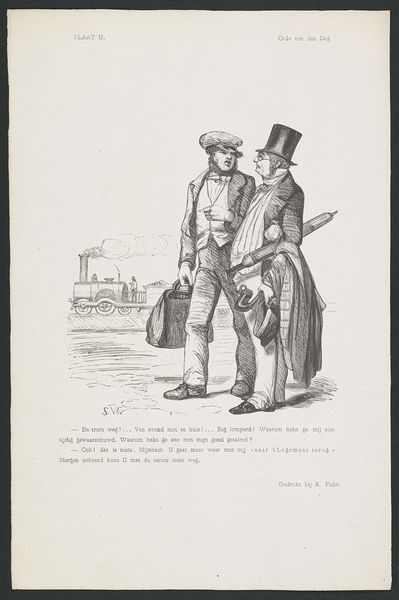
drawing, lithograph, print, pencil, graphite
#
portrait
#
drawing
#
narrative-art
#
lithograph
# print
#
caricature
#
traditional media
#
figuration
#
historical photography
#
romanticism
#
pencil
#
graphite
#
genre-painting
#
cartoon carciture
Dimensions: height 277 mm, width 186 mm
Copyright: Rijks Museum: Open Domain
Curator: This lithograph, entitled "Boekhandelaar toont een klant drie boeken," roughly translated to "Bookseller showing a client three books," dates back to the 1830s-1840s and is the work of an anonymous artist. Editor: Immediately, I'm struck by the stark contrast in the characters. The bookseller appears almost painfully scholarly, with his glasses and bundled scarf, while the customer has this…almost deliberately anti-intellectual air about him. Curator: That's a fantastic observation. Genre paintings, especially caricatures like this, served as a mirror reflecting societal values. In this context, we see a clash between learning and perhaps a more pragmatic view of knowledge, a debate that's arguably still ongoing. Notice the inscription under the figures. Editor: Absolutely! The inscription reveals the client doesn't want books about travels or history, rather he states he wants something entertaining for his son, ideally a 'Pickwick', probably referring to Charles Dickens' popular novel, "The Pickwick Papers". It shows us this tension between the instructive and entertaining purposes of literature, but also access to knowledge at that time. Curator: Precisely! And that the piece is rendered as a print indicates that these sorts of commentaries reached a wide audience. The visual satire would have sparked conversation around education, class, and cultural aspirations. Editor: I wonder too about the undercurrent of the emerging middle class. Was this figure's aversion to "serious" subjects a way to reject what he viewed as stuffy, outdated notions of education and upward mobility? To pave new, less academic, paths for his son? Curator: It’s entirely plausible. The Romantic era witnessed societal shifts and redefinitions of what constituted worthwhile knowledge. It’s clear in this piece, as humorous as it may seem, that some traditional modes of acquiring "useful knowledge" were beginning to be questioned. Editor: Well, "Boekhandelaar toont een klant drie boeken" reveals much more than a simple transaction; it offers a snapshot of anxieties and aspirations during a period of transformation. Curator: A telling observation. This seemingly lighthearted image reveals a complex interplay of societal values surrounding education, class, and accessibility in early 19th-century society.
Comments
No comments
Be the first to comment and join the conversation on the ultimate creative platform.
